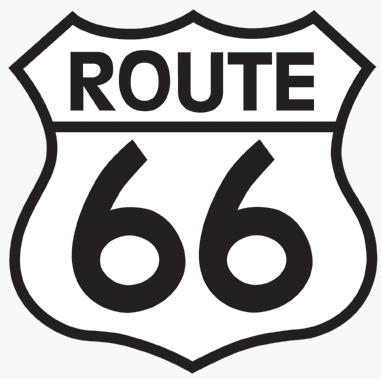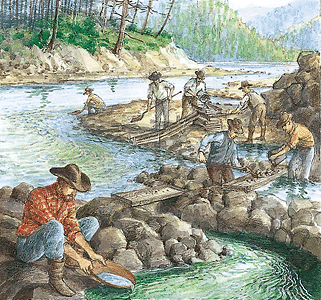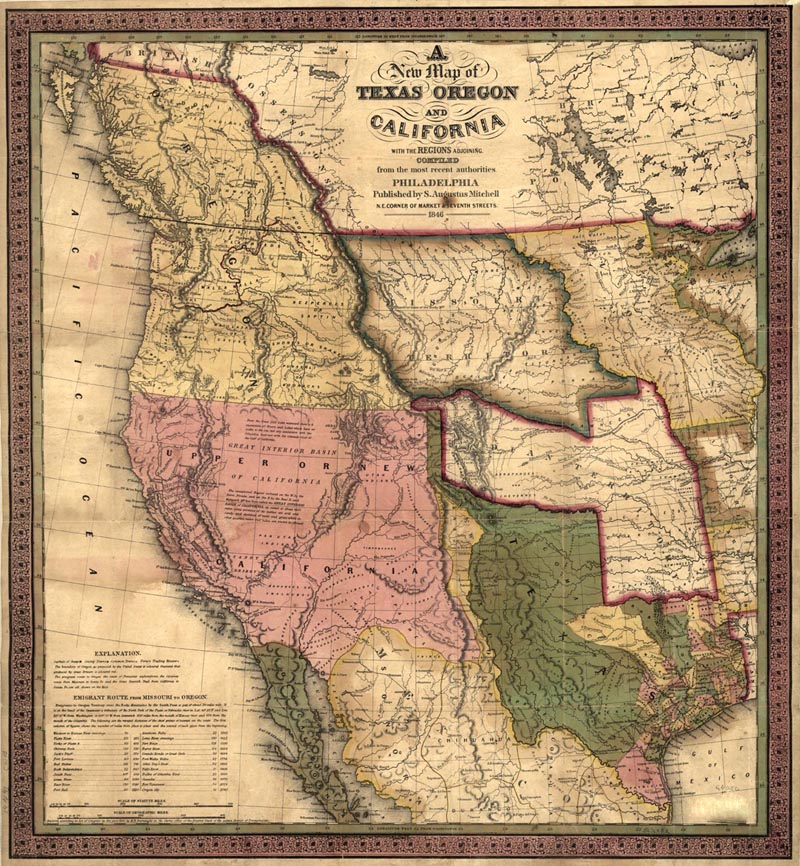 I have read some new infotmation about Route 66. This route served as a major path for those who migra
I have read some new infotmation about Route 66. This route served as a major path for those who migra
Route 66 in California
I have read that Route 66 was the way most people got to California

Read more information here :
California
Geography of California Rising
as an almost impenetrable granite barrier E of the Central Valley is the Sierra Nevada range, which includes Mt. Whitney, Kings Canyon National Park, Sequoia National Park, and Yosemite National Park. The Cascade Range, the northern continuation of the
Sierra Nevada, includes Lassen Volcanic National Park. Lying E of the S
Sierra Nevada is Death Valley
Rising
as an almost impenetrable granite barrier E of the Central Valley is the Sierra Nevada range, which includes Mt. Whitney, Kings Canyon National Park, Sequoia National Park, and Yosemite National Park. The Cascade Range, the northern continuation of the
Sierra Nevada, includes Lassen Volcanic National Park. Lying E of the S
Sierra Nevada is Death Valley History
The history of California can be divided into: the Native American period; European exploration period from 1542 to 1769; the Spanish colonial period, 1769 to 1821; the Mexican period, 1821 to 1848; and United States statehood, which continues to the present day.
The early
history of California is characterized by
being surrounded by barriers nearly isolating the state: the Pacific Ocean to
the west, the Sierra Nevada mountains backed by the nearly barren Great
Basin in the east, the Mojave Desert and Sonora Desert areas
in the southern interior and Redwood–Douglas fir forests on the
rugged mountainous North
Coast
.
After
initial explorations, the Spaniards left Alta
California alone for over 200 years. Relative isolation
continued even after Spanish Missions, the Presidio and pueblo settlements
began to be developed in 1769. The only easy communication with the rest of New
Spain (Mexico ) was by
ship, as the Quechan (Yuma California to Mexico
was much easier, but first the traveler had to get to California
 The California
Gold Rush beginning in January 1848, increased
The California
Gold Rush beginning in January 1848, increased
You can
find more infotmation about history of California
The capital of California

.jpg/800px-Sacramento_Skyline_(cropped).jpg)
And here is
some more information about Sacramento:
http://www.saccounty.net/default.htm
http://www.cityofsacramento.org/
http://www.tripadvisor.com/Tourism-g32999-Sacramento_California-Vacations.html

Arnold 2003,
in a special recall election to replace
then-Governor Gray Davis Davis California 2007. In 2011, Schwarzenegger completed
his second term as governor, and it was announced that he had separated from Maria
Shriver, his wife for the last 25 years, and a member of the influential Kennedy
family, as a niece of the late Democrat US President John F.
Kennedy.
You can read about this person here:
http://www.telegraph.co.uk/news/celebritynews/8504760/Top-10-facts-about-Arnold-Schwarzenegger.html
http://www.biography.com/people/arnold-schwarzenegger-9476355
http://www.bodybuildingology.com/arnoldfacts.shtml
http://www.buzzfeed.com/totalrecall/16-facts-you-probably-didnt-know-about-arnold-sch-7etv
http://www.cityofsacramento.org/
http://www.tripadvisor.com/Tourism-g32999-Sacramento_California-Vacations.html
Arnold

You can read about this person here:
http://www.telegraph.co.uk/news/celebritynews/8504760/Top-10-facts-about-Arnold-Schwarzenegger.html
http://www.biography.com/people/arnold-schwarzenegger-9476355
http://www.bodybuildingology.com/arnoldfacts.shtml
http://www.buzzfeed.com/totalrecall/16-facts-you-probably-didnt-know-about-arnold-sch-7etv


No comments:
Post a Comment